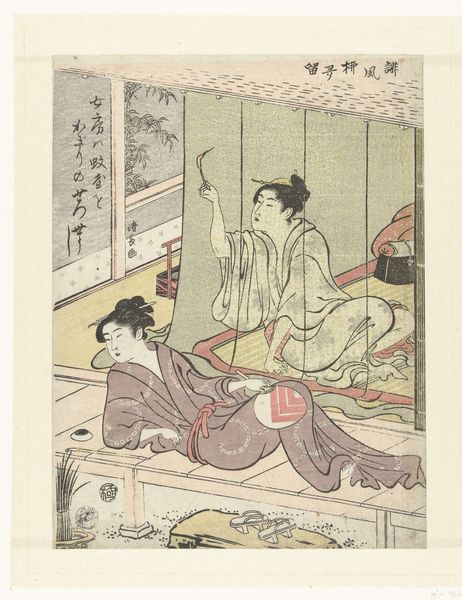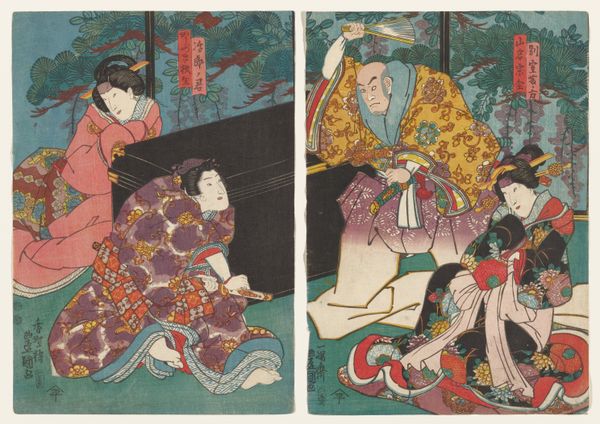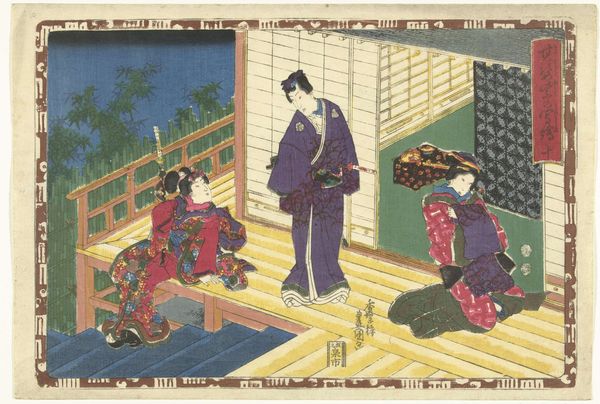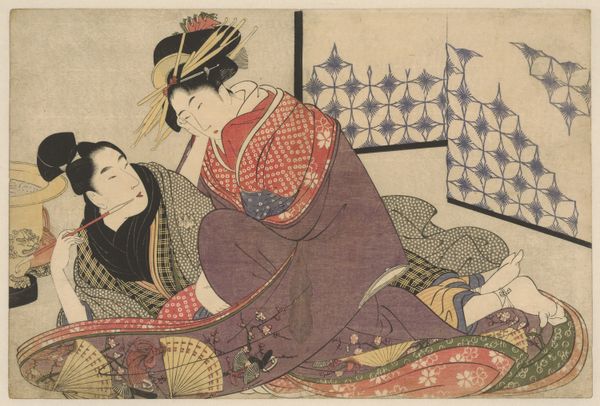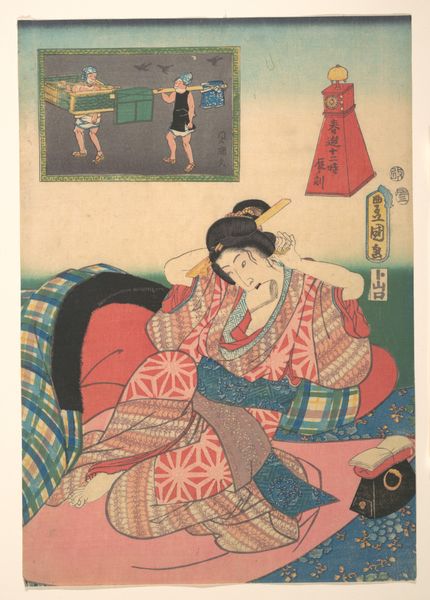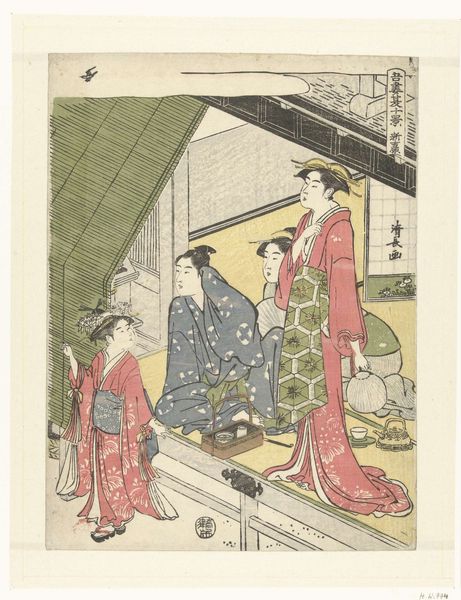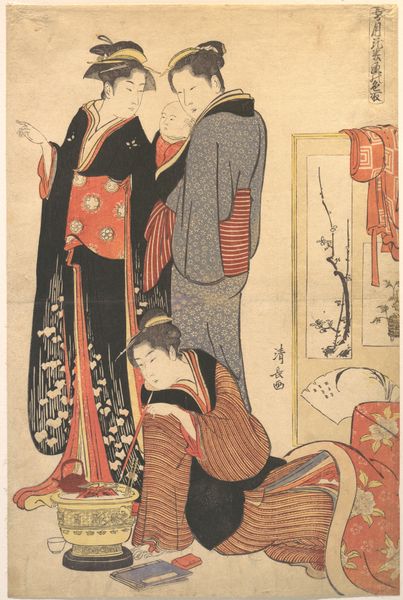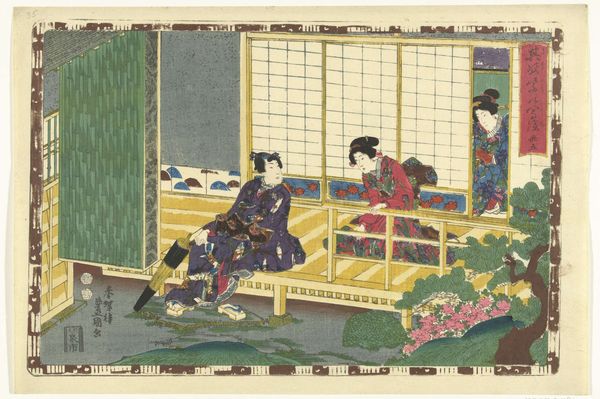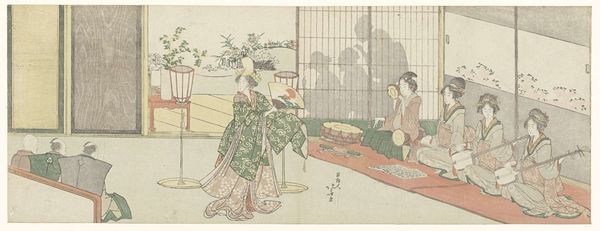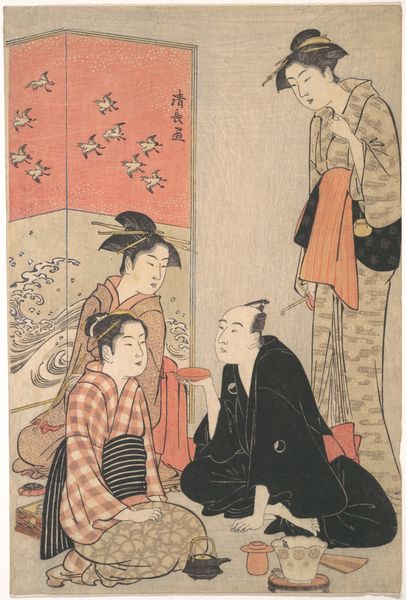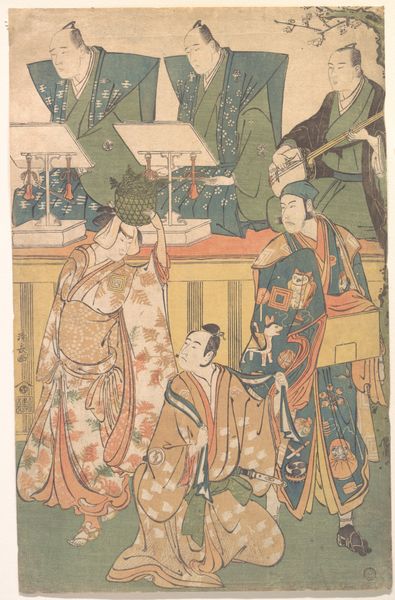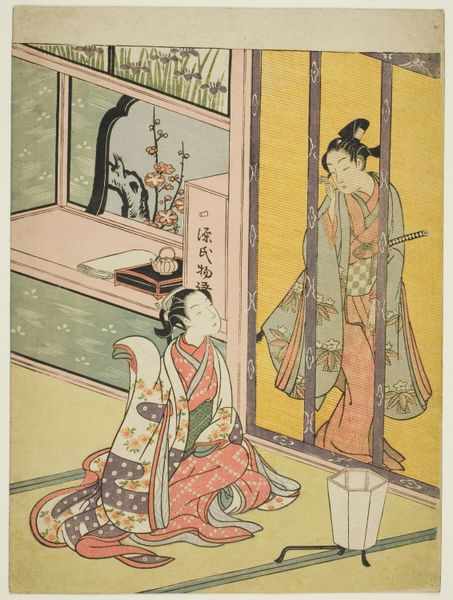
Copyright: Public domain
Curator: Here we have “Shigemori,” a woodblock print created in 1898 by Yōshū Chikanobu. It’s a striking example of ukiyo-e and history painting. What are your first thoughts? Editor: Immediately, I notice the cool palette, especially the prominent blue kimono contrasted with the monk's red robes. It sets a contemplative mood, doesn't it? The composition is interesting, the two figures offset but balanced by the groups visible through the screen. Curator: Indeed. This piece depicts the historical figure Komatsu Shigemori. He was known for his righteousness and attempts to mediate between warring factions within the Imperial court. Editor: The geometric patterns – the kimono’s diamonds, the tatami mats – create a structured, almost rigid space around him. Is that intentional? Perhaps hinting at the constraints he faced? Curator: It certainly speaks to the social and political structures of the time. The print would have served to disseminate ideals of virtuous leadership and offer commentary on the past during a time of intense change in Japan. It provided both a sense of cultural continuity and a space for critical reflection. Editor: And the tension between the flat planes and the perspectival rendering of the space adds another layer of complexity. The artist has not committed entirely to either one, setting up another kind of visual discourse, a kind of dynamic tension between formal qualities. Curator: Exactly, and you can feel this artistic tension as well within the social climate of Meiji-era Japan. Woodblock prints such as these weren't merely aesthetic objects. They carried considerable cultural weight, shaping public opinion and reinforcing societal norms through easily accessible imagery. Editor: Right. I like that the illustrative quality remains even with this more sober, history-focused theme. It's not overly realistic. It allows for more nuance and emotion to permeate. I'd say it feels welcoming as a history lesson, as if inviting one to imagine the details of the moment and not feel confined by dates and details. Curator: Absolutely. Looking closer at the print enhances our understanding of Meiji period society. What might appear as a straightforward illustration holds a multitude of narratives on tradition, morality, and social transformation. Editor: It is certainly a masterclass in how seemingly simple compositional and design elements come together to produce an extremely engaging print. Thank you for adding the historical context!
Comments
No comments
Be the first to comment and join the conversation on the ultimate creative platform.
